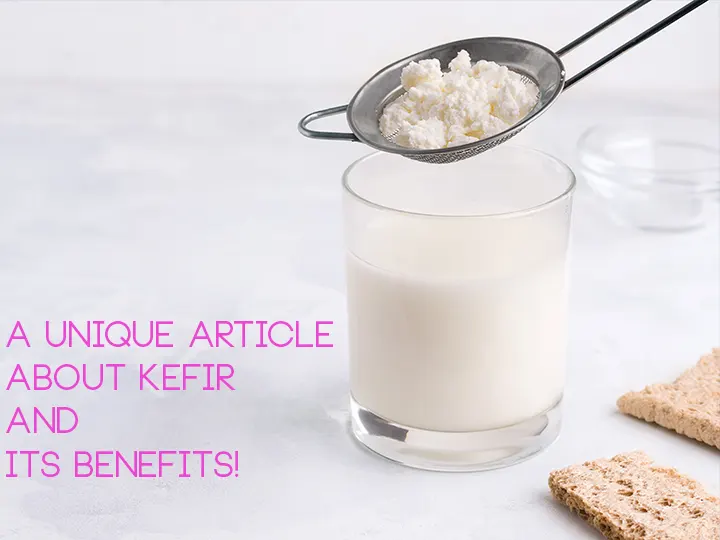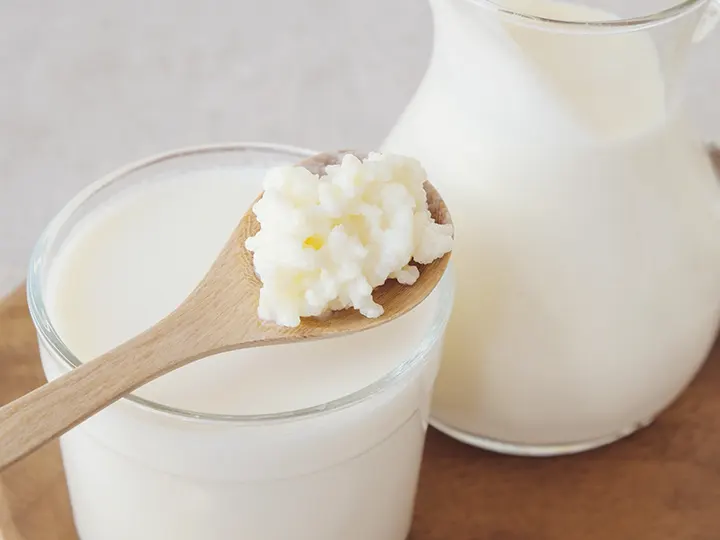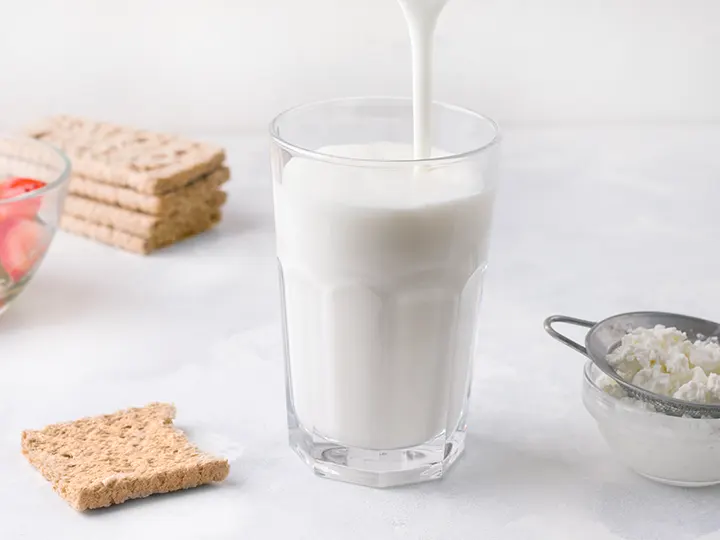
Kefir: A Nutritious Probiotic Beverage
Kefir is a tangy, fermented drink that has been enjoyed for centuries. It is made by adding kefir grains to milk and allowing it to ferment for 12-24 hours. Kefir grains are a combination of bacteria and yeast that form a symbiotic relationship, creating a thick, creamy, and slightly sour drink that is packed with nutrients and probiotics.
Kefir has gained popularity in recent years due to its numerous health benefits. In this article, we will explore the benefits of kefir, the different types of kefir, how to make kefir, and how to incorporate it into your diet.
What are the benefits of Kefir?
Rich in Nutrients: Kefir is a rich source of nutrients, including protein, calcium, and B vitamins. One cup of kefir contains approximately 6 grams of protein, 20% of the daily recommended intake of calcium, and 15-20% of the daily recommended intake of B vitamins.
Contains Probiotics: Kefir is a probiotic-rich beverage, containing over 50 different strains of beneficial bacteria and yeast. These probiotics help to improve gut health by restoring the balance of good bacteria in the gut, reducing inflammation, and improving immune function.
May Reduce Inflammation: Inflammation is the root cause of many chronic diseases, including heart disease, cancer, and arthritis. Kefir has been shown to reduce inflammation in the body, which may help to reduce the risk of chronic disease.
May Improve Digestion: Kefir is an excellent source of lactic acid bacteria, which can help to improve digestion and reduce symptoms of digestive disorders, such as irritable bowel syndrome (IBS).
May Improve Bone Health: Kefir is an excellent source of calcium, which is essential for strong bones. Additionally, the probiotics in kefir may help to improve the absorption of calcium in the body, further promoting bone health.
May Help with Weight Loss: Kefir is a low-calorie, nutrient-dense beverage that can help to promote satiety and reduce cravings. Additionally, the probiotics in kefir may help to improve insulin sensitivity, which can further promote weight loss.
May Improve Skin Health: Kefir contains lactic acid, which has been shown to improve skin health by reducing inflammation and promoting the growth of healthy bacteria on the skin.
May Improve Mental Health: The gut-brain axis is a two-way communication system between the gut and the brain. The probiotics in kefir may help to improve mental health by reducing inflammation, improving gut health, and promoting the production of neurotransmitters, such as serotonin.

What are the different types of kefir?
Milk Kefir: Milk kefir is the most common type of kefir and is made by adding kefir grains to milk. It has a slightly sour taste and a creamy texture.
Water Kefir: Water kefir is made by adding kefir grains to water and sugar. It has a slightly sweet taste and a bubbly texture.
Coconut Kefir: Coconut kefir is made by adding kefir grains to coconut milk. It has a slightly sweet taste and a creamy texture.
How to Make Kefir?
Making kefir is a simple process that can be done at home with a few basic tools. Here is a step-by-step guide on how to make kefir:
Acquire Kefir Grains: The first step in making kefir is to acquire kefir grains. You can purchase kefir grains online or from a health food store. Alternatively, you may be able to get some from a friend who already makes kefir. Make sure to get live kefir grains, as dehydrated or powdered kefir will not work.
Choose your milk: Once you have your kefir grains, you can choose the type of milk you want to use. Cow's milk is the most common, but you can also use goat's milk, sheep's milk, or even non-dairy milks like soy milk or almond milk.
Add kefir grains to milk: Add the kefir grains to a clean glass jar and pour the milk over them. The ratio of kefir grains to milk is typically 1:10, so for every tablespoon of kefir grains, you'll need 1 cup of milk.
Ferment the kefir: Cover the jar with a clean cloth or coffee filter and secure it with a rubber band. Place the jar in a warm, dark place and allow it to ferment for 12-24 hours. The longer you ferment the kefir, the tangier it will become.
Strain the kefir: After the kefir has fermented, strain it through a fine-mesh strainer to remove the kefir grains. The kefir grains can be reused for future batches.
Store the kefir: Transfer the kefir to a clean glass jar and store it in the refrigerator. Kefir will keep for 1-2 weeks in the refrigerator.

How to Incorporate Kefir into Your Diet?
Kefir is a versatile ingredient that can be used in a variety of ways. Here are some ideas for incorporating kefir into your diet:
Drink it straight: Kefir can be enjoyed straight from the glass, either on its own or with a little honey or fruit to sweeten it.
Use it in smoothies: Kefir adds a tangy, creamy flavor to smoothies. Blend it with your favorite fruits, greens, and a little honey for a nutritious and delicious smoothie.
Make kefir cheese: Strain the kefir through a cheesecloth to create a soft cheese that can be used in dips, spreads, and sauces.
Use it as a marinade: The tangy flavor of kefir makes it a great marinade for meats, fish, and vegetables.
Add it to baked goods: Replace some of the milk or buttermilk in your favorite baked goods recipe with kefir for a tangy twist.
Kefir is a nutritious, probiotic-rich beverage that offers numerous health benefits. It is easy to make at home and can be incorporated into a variety of dishes. Whether you drink it straight or use it as an ingredient, kefir is a great way to boost your gut health and overall well-being. So go ahead and give kefir a try - your body will thank you for it!
